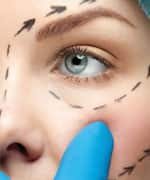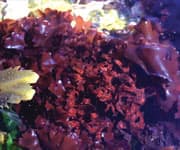Life Extension Magazine®

For those seeking a new weapon in the fight against aging skin, a peptide has recently been developed that promises to breathe new life into aged and damaged skin.
Peptides are one of the most popular active ingredients for repairing damaged and aging skin today.
Peptides trigger increased collagen production,1 enhance antioxidant defense,2 and improve cellular repair3 —all of which result in skin that is softer, smoother, and more radiant-looking.
A new peptide has been developed that mimics the action of the body’s own natural youth hormone, thymopoietin. As a result, it helps trigger cellular reactions and reparative processes that are usually only seen in much younger skin. And best of all, results have been seen in as little as 5 days!
By mimicking thymopoietin, this anti-aging peptide known as Acetyl Tetrapeptide-2 helps rejuvenate facial skin by improving skin tone and texture.
Understanding the Youth Hormone
Thymopoietin is a polypeptide hormone secreted by the thymus that affects the rate at which your skin ages. Normal aging causes significant atrophy of the thymus gland, resulting in diminished production of thymopoietin.
Lack of this hormone jeopardizes immune function and negatively affects the body’s ability to produce DNA and undergo normal cell division.4 Simply put, thymopoietin affects the body’s capacity to maintain youthful function in everything from skin cells to brain cells. The loss of thymopoietin is considered by many immunologists to be a major bio-marker of aging.4
Reinforce Your Skin’s Immune Defenses
Studies have shown that T-cells (a type of immune cell that matures in the thymus gland) promote cellular restoration by secreting growth hormone and growth hormone releasing factor.5-7 Growth hormone stimulates the growth, reproduction, and regeneration of cells.8 And growth hormone releasing factor triggers the production of growth hormone.
All of these biological processes that are vital for the health and longevity of your skin are largely controlled by thymopoietin and the thymus.
Unfortunately, around the age of puberty, the thymus begins to shrink. This results in a lack of thymopoietin in the bloodstream, which in turn compromises the skin’s immune system and its ability to reproduce and replace old cells. That’s why maintaining adequate levels of this important hormone is critical for maintaining youthful skin.
Stimulate the Growth of New Skin Cells

Thymopoietin stimulates the growth and differentiation of keratinocytes. Keratinocytes are specialized skin cells in the epidermis that control the ongoing process of cell turnover and renewal. This is a key component in anti-aging because the skin’s ability to renew itself and the rate at which it does so is absolutely essential to keeping the skin looking young.
Keratinocytes make up 95% of all the cells in the epidermis, the outer layer of the skin.9 The keratinocytes that are located in the basal (bottom) layer of the skin are often referred to as basal cells.
Keratinocytes perform a number of functions that are vital to the health and beauty of the skin. The keratinocytes in the top layer of skin form a protective barrier against harmful environmental influences (such as bacteria and UV damage).10 They also lock in water, which keeps the skin soft and moist.
However, it’s the keratinocytes located on the bottom layer of the epidermis that produce new replacement cells and start them on their journey to the surface of the skin.9
Since thymopoietin stimulates the growth of keratinocytes, adequate thymopoietin levels are necessary for the growth of new skin cells to occur at a healthy rate.
Unfortunately, the older we get, the longer it takes basal keratinocytes to regenerate due to the declining levels of thymopoeitin.11 This negatively impacts the rate at which skin cells renew themselves. As a result, your skin gradually becomes thinner and more susceptible to injury and attack. Additionally, since new cells take longer to reach the surface, the dull, devitalized skin cells on the surface eventually dominate—creating the rough, uneven texture so characteristic of aging.
5 Days to Younger-Looking Skin
A restorative polypeptide has been developed that helps stimulate the reproductive function of basal cells to combat the signs of aging.12 It’s called Acetyl Tetrapeptide-2.
This peptide compensates for the natural loss of thymopoietin by boosting the skin’s immune defenses and stimulating the growth and differentiation of keratinocytes. This innovative ingredient helps trigger cellular reactions and reparative processes that are usually only seen in much younger skin.
What You Need to Know

Revive Functionally Compromised Skin Cells
- Your body’s youth hormone, thymopoietin, is vital for the health and longevity of your skin.
- Thymopoietin reinforces your skin’s immune defenses and stimulates the growth of new skin cells.
- Thymopoietin levels decline with age, and many immunologists consider this to be a major bio-marker of aging.
- Acetyl Tetrapeptide-2 is a unique polypeptide that mimics the powerful action of thymopoietin.
- Acetyl Tetrapeptide-2 actively energizes mature skin, resulting in visibly younger skin.
- In addition, the Irish moss Chondrus crispus promotes the regeneration of damaged skin, improves cell growth, counteracts the destructive forces of oxidation, and is an excellent source of skin-supporting vitamins, minerals, and phytonutrients.
Early Experimental Studies Have Been Remarkable!
In-vitro tests show that Acetyl Tetrapeptide-2 increased cellular growth (as measured in keratinocyte density) by 51% in just 5 days! In addition, it enhanced the metabolic activity of keratinocytes, increasing the production of keratin by 75% and of keratohyalin by 28%.12 Observations of skin biopsies from participants in the study showed a visibly improved skin profile and increased skin regeneration.12
But that’s not all. This ingredient stimulated keratinocytes to produce something called granulocyte macrophage colony stimulating factor (GM-CSF). Granulocyte macrophage colony stimulating factor activates the production of cells that are vital to the skin’s immune response (including white blood cells, macrophages, and Langerhans cells). The study revealed that the granulocyte macrophage colony stimulating factor production was boosted by 450% in just 5 days!12 By reinforcing immune defenses and enhancing epidermis regeneration, this discovery can help restore aging, mature skin.
Seaweed and Your Skin

Another natural compound found to stimulate the activity of keratinocytes (that improve cell growth) and to counteract the destructive forces of oxidation is Chondrus crispus, a seaweed that grows in the Atlantic Ocean.13 This Irish moss, as it’s called, has a number of beneficial effects on the health and vitality of the skin.
Chondrus crispus provides a protective, water-binding barrier that promotes the regeneration of damaged skin and is an excellent source of skin-supporting vitamins, minerals, and phytonutrients.13,14 It improves skin softness and silkiness by trapping and holding moisture, which instantly cools and hydrates the skin.14 And its high sulfur content is incredibly nourishing to the skin.
Chondrus crispus is a rich source of carrageenan, which is an excellent moisturizer with soothing properties.13 As an added benefit, carrageenan also aids the penetration of other active ingredients into your skin,15 delivering them deep into the epidermis to leave the skin looking younger, healthier, and refreshed.
From a nutrient standpoint, Chondrus crispus maintains a unique amino acid profile that is extremely well balanced. In fact, it contains most of the essential amino acids that are needed to sustain life and health.16
Seaweed contains a number of trace elements essential for the body’s healthy function in large quantities.17 In addition to its wealth of minerals (calcium, phosphorus, sodium, magnesium, and potassium), this nutrient-packed botanical is an excellent source of vitamins and phytonutrients18 that help rejuvenate and restore ailing skin. The various vitamins, minerals, and other phytocompounds found in seaweed help encourage the necessary repair, regeneration, and defense of the skin.19
Summary
Your body’s youth hormone, thymopoietin, is vital for the health and longevity of your skin. Thymopoietin reinforces your skin’s immune defenses and stimulates the growth of new skin cells. As we age, our thymus gland atrophies, resulting in the loss of thymopoietin.
An innovative peptide called Acetyl Tetrapeptide-2 has recently been developed that mimics the action of thymopoietin. Acetyl Tetrapeptide-2 has been scientifically shown to help revive old and functionally compromised skin cells, causing them to operate in a more youthful fashion.
In addition, the botanical seaweed Chondrus crispus is known to promote repair of damaged skin cells, improve skin texture, and reduce oxidative damage to the skin.
Together, these two skin rejuvenators improve skin by exfoliating, nourishing, moisturizing, protecting, detoxifying, and regenerating it. The unique combination of nourishing botanical extracts and potent anti-aging polypeptides can breathe new life into aging and damaged skin.
If you have any questions on the scientific content of this article, please call a Life Extension® Health Advisor at 1-866-864-3027.
References
- Yoon JH, Kim J, Lee H, et al. Laminin peptide YIGSR induces collagen synthesis in Hs27 human dermal fibroblasts. Biochem Biophys Res Commun. 2012 Nov 23;428(3):416-21.
- Elias RJ, Kellerby SS, Decker EA. Antioxidant activity of proteins and peptides. Crit Rev Food Sci Nutr. 2008 May;48(5):430-41.
- Cabrera C, Carriquiry G, Pierinelli C, Reinoso N, Arias-Stella J, Paino J. The role of biologically active peptides in tissue repair using umbilical cord mesenchymal stem cells. Ann N Y Acad Sci. 2012 Oct;1270:93-7.
- Weber PJ, Eckhard CP, Gonser S, Otto H, Folkers G, Beck-Sickinger AG. On the role of thymopoietins in cell proliferation. Immunochemical evidence for new members of the human thymopoietin family. Biol Chem. 1999 Jun;380(6):653-60.
- Liu J, Zheng D, Deng J, Xiao S, Liu S, Shi Y. Immunoreactive growth hormone in human peripheral T lymphocytes: encoding sequence of cDNA identical to that of the pituitary human growth hormone. Chin Med J (Engl). 1997 May;110(5):362-5.
- Weigent DA, Blalock JE. Expression of growth hormone by lymphocytes. Int Rev Immunol. 1989 Jun;4(3):193-211.
- Weigent DA, Blalock JE. Immunoreactive growth hormone-releasing hormone in rat leukocytes. J Neuroimmunol. 1990 Sep-Oct;29(1-3):1-13.
- Wisniewski ES, Rees DK, Chege EW. Proteolytic-based method for the identification of human growth hormone. J Forensic Sci. 2009 Jan;54(1):122-7.
- Available at: http://keratinocyte-transfection.com/index.html. Accessed February 7,2013.
- Eckert RL, Rorke EA. Molecular biology of keratinocyte differentiation. Environ Health Perspect. 1989 Mar;80:109-16.
- Gilhar A, Ullmann Y, Karry R, et al. Aging of human epidermis: reversal of aging changes correlates with reversal of keratinocyte fas expression and apoptosis. J Gerontol A Biol Sci Med Sci. 2004 May;59(5):411-5.
- Available at: http://www.innovadex.com/documents/1045286.pdf?bs=4501&b=125062&st=20. Accessed February 8, 2013.
- Available at: http://www.herbs2000.com/herbs/herbs_irish_moss.htm. Accessed February 8, 2013.
- Kadajji VG, Betageri GV. Water soluble polymers for pharmaceutical applications. Polymers.2011;3(4):1972-2009.
- Valenta C, Schultz K. Influence of carrageenan on the rheology and skin permeation of microemulsion formulations. J Control Release. 2004 Mar 5;95(2):257-65.
- Young EG, Smith DG. Amino acids, peptides, and proteins of Irish Moss, Chondrus crispus. J Biol Chem. 1958 Aug;233(2):406-10.
- Available at: http://drs.nio.org/drs/bitstream/2264/489/1/sci_cult_71_60.pdf. Accessed February 11, 2013.
- Škrovánková S. Seaweed vitamins as nutraceuticals. Adv Food Nutr Res. 2011;64:357-69.
- Chiu A, Kimball AB. Topical vitamins, minerals and botanical ingredients as modulators of environmental and chronological skin damage. Br J Dermatol. 2003 Oct;149(4):681-91.

